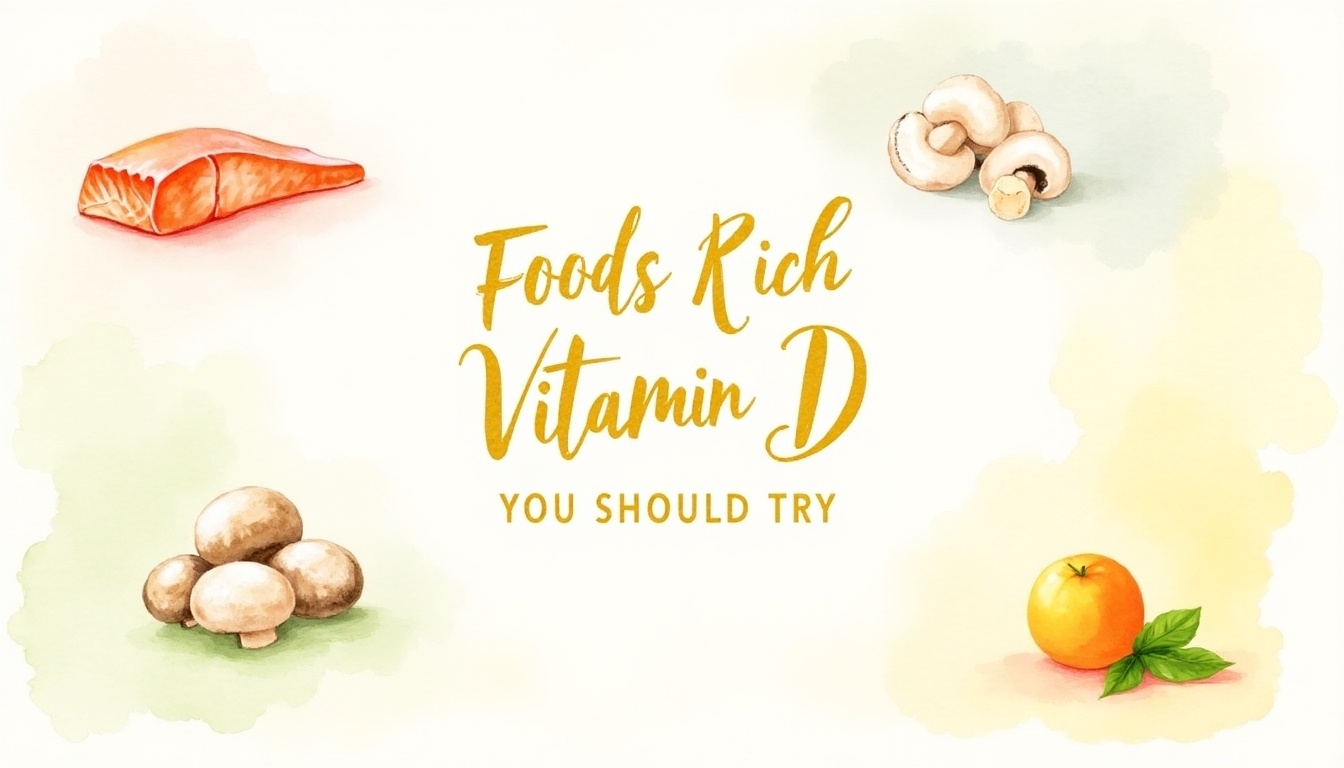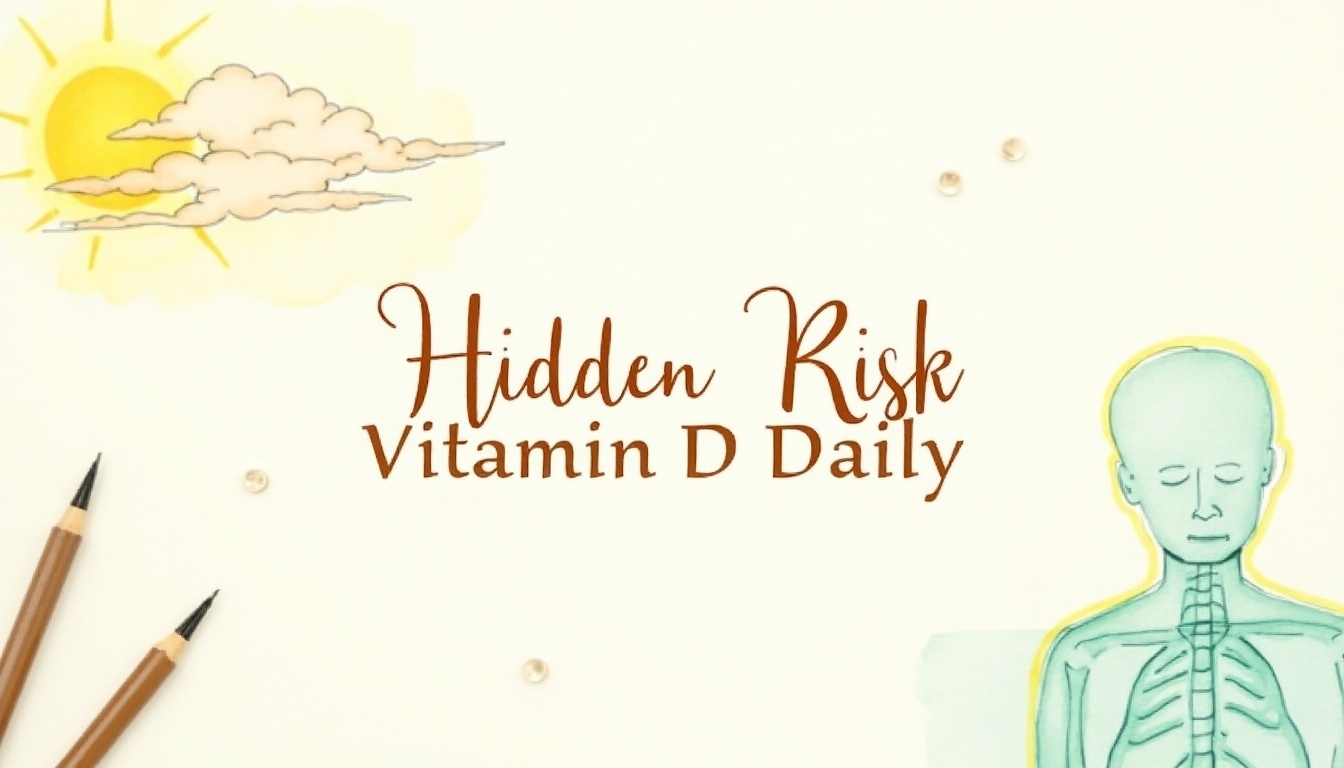Vitamin D is essential for our health, yet many people don’t get enough from sunlight alone. Fortunately, there are several foods rich in this vital nutrient that you might want to include in your diet. Fatty fish like salmon and mackerel top the list due to their high vitamin D content. Egg yolks offer another tasty option, along with fortified dairy products such as milk and yogurt. Mushrooms exposed to sunlight can also provide a decent dose of vitamin D. Cod liver oil remains a strong source, though not everyone likes its taste. Finally, some cereals come fortified with vitamin D as well, making them an easy choice for many diets. Including these foods can help keep your levels balanced without much fuss.
Table of Contents
- Wild-Caught Salmon: A Natural Source of Vitamin D3
- Cod Liver Oil and Its Benefits for Vitamin D
- Egg Yolks: Small but Mighty Vitamin D Provider
- Mushrooms Exposed to Sunlight Boost Vitamin D Levels
- Fortified Dairy Products Offering Added Vitamin D
- Grass-Fed Beef and Vitamin D Content
- Sardines: Tiny Fish Packed with Vitamin D
- Frequently Asked Questions
Wild-Caught Salmon: A Natural Source of Vitamin D3
Wild-caught salmon is one of the best natural sources of vitamin D3, a form of vitamin D that plays a crucial role in maintaining strong bones and supporting the immune system. Unlike farmed salmon, wild salmon tends to have higher levels of vitamin D3 because of their natural diet and greater exposure to sunlight in their native environments. A single serving of wild-caught salmon can provide more than 100% of the daily recommended vitamin D intake, making it an efficient way to boost your levels, especially in areas where sunlight is scarce. Vitamin D3 from salmon is easily absorbed by the body, enhancing its effectiveness. Besides vitamin D, wild salmon is rich in omega-3 fatty acids, which complement vitamin D’s benefits by promoting heart and brain health. When preparing salmon, cooking methods such as grilling or baking help preserve most of its vitamin D content, unlike frying which can reduce it. Seasonal and regional differences affect the vitamin D content, with fish from colder waters typically containing more. In addition to vitamin D and omega-3s, wild salmon provides protein, selenium, and antioxidants, all of which support overall wellness. Regularly including wild-caught salmon in your diet can help maintain bone density, improve muscle function, and even support mood regulation through vitamin D’s role in various body processes.
- Wild-caught salmon offers a rich natural source of vitamin D3, important for bone health and immunity.
- It generally contains higher vitamin D3 levels than farmed salmon due to natural diet and sunlight.
- A typical serving provides over 100% of the daily recommended intake of vitamin D.
- Vitamin D3 from salmon is easily absorbed, efficiently boosting vitamin D levels.
- Including wild salmon helps prevent vitamin D deficiency, especially in low sunlight areas.
- Salmon also provides omega-3 fatty acids, which complement vitamin D for overall health.
- Cooking methods like grilling or baking retain more vitamin D compared to frying.
- Seasonal and regional factors affect vitamin D levels, with colder waters yielding more.
- It contains other nutrients like protein, selenium, and antioxidants that support vitamin D benefits.
- Regular consumption supports bone density, muscle function, and may improve mood through vitamin D regulation.
Cod Liver Oil and Its Benefits for Vitamin D
Cod liver oil is a powerful source of vitamin D3, which is the form of vitamin D that the body absorbs and uses most efficiently. Just one teaspoon can supply more than the daily recommended amount of vitamin D, making it a convenient option, especially when sunlight exposure is limited during winter months. Beyond vitamin D, cod liver oil also contains vitamin A and omega-3 fatty acids, nutrients known to support immune function, reduce inflammation, and promote heart health. Historically, cod liver oil was widely used to prevent rickets, a disease caused by vitamin D deficiency, and it remains a trusted supplement today for maintaining bone strength and overall wellness. However, it’s important to monitor intake because excessive consumption can lead to too much vitamin A, which may be harmful. Available in both liquid and capsule forms, cod liver oil offers flexibility, but choosing a high-quality, purified product ensures you get the maximum benefits without contaminants. Regular use can also contribute to improved skin health through vitamin D’s role in skin cell regulation.
Egg Yolks: Small but Mighty Vitamin D Provider
Egg yolks are a modest yet valuable source of vitamin D3, contributing around 6% of the daily recommended intake per yolk. The vitamin D content in eggs varies depending on factors like the hen’s diet and sunlight exposure, with free-range or pasture-raised eggs typically offering higher levels than conventionally raised ones. Beyond vitamin D, egg yolks provide important nutrients such as protein, choline, and healthy fats, which support overall nutrition. The fat in yolks also aids the absorption of vitamin D, a fat-soluble vitamin. Cooking eggs gently helps preserve their vitamin D content better than prolonged high heat methods. Affordable and versatile, eggs fit easily into many meal plans and can help maintain adequate vitamin D levels, especially for those who get limited sun exposure. Including eggs alongside other vitamin D-rich foods promotes a balanced approach to meeting daily vitamin D needs.
Mushrooms Exposed to Sunlight Boost Vitamin D Levels
Certain mushrooms can naturally produce vitamin D2 when exposed to ultraviolet (UV) light, making them a valuable plant-based source of this essential nutrient. Unlike most food sources of vitamin D that come from animals, UV-exposed mushrooms offer an option suitable for vegetarians and vegans. While vitamin D2 is not as potent as vitamin D3 found in animal products, it still contributes significantly to daily vitamin D intake. Wild mushrooms that grow in sunlight tend to have higher vitamin D levels compared to those grown indoors without light exposure. Additionally, some commercially available mushrooms are treated with UV light to boost their vitamin D content, providing up to 100% of the recommended daily amount in a single serving. Cooking mushrooms does not notably reduce their vitamin D, which makes them a practical addition to meals. Beyond vitamin D, mushrooms also supply antioxidants, fiber, and minerals that support overall health. Regularly including mushrooms in your diet can help improve bone strength and support the immune system, all while adding a low-calorie, nutritious ingredient to your plate.
Fortified Dairy Products Offering Added Vitamin D
Many dairy products like milk, yogurt, and cheese are fortified with vitamin D to help prevent deficiencies, especially in regions with less sunlight. These fortified products typically provide about 10-25% of the daily vitamin D requirement per serving, with vitamin D3 being the common form used, which the body absorbs effectively. Besides vitamin D, dairy also supplies calcium, and together they support stronger bones by enhancing bone mineralization. Regularly consuming fortified dairy can aid muscle function and reduce the risk of osteoporosis over time. Since fortification levels can vary by country and product, it’s important for consumers to check labels to understand the vitamin D content and serving sizes. For those who are lactose intolerant, lactose-free or plant-based dairy alternatives fortified with vitamin D offer a good option. Including fortified dairy along with other vitamin D sources can help maintain adequate levels and improve overall health.
| Dairy Product | Vitamin D Content (% Daily Value) | Vitamin D Form | Additional Nutrients | Notes |
|---|---|---|---|---|
| Milk | 10-25% | D3 | Calcium | Fortification levels vary by country |
| Yogurt | 10-20% | D3 | Calcium | Check label for vitamin D content |
| Cheese | 10-15% | D3 | Calcium | May be fortified depending on brand |
| Lactose-Free Milk Alternatives | Varies | Usually D3 or D2 | Calcium, varies | Suitable for lactose-intolerant individuals |
Grass-Fed Beef and Vitamin D Content
Grass-fed beef is a modest but valuable source of vitamin D3, thanks to the cattle’s exposure to sunlight and their natural diet. Compared to grain-fed beef, grass-fed varieties tend to have higher vitamin D levels, though these amounts are still lower than what you’d find in fatty fish or fortified foods. Within beef cuts, liver stands out as the richest source of vitamin D, offering more than muscle meat. Including grass-fed beef in your meals not only adds vitamin D but also delivers quality protein and essential minerals. The vitamin D it provides supports bone health and can work alongside other dietary sources to help meet your daily needs. How you cook grass-fed beef matters too: roasting or grilling helps preserve more vitamin D compared to frying. Additionally, grass-fed beef contains higher levels of omega-3 fatty acids and antioxidants, which contribute to overall wellness. The vitamin D content can vary with the seasons, typically rising in summer when cattle graze outdoors. Moderate consumption of grass-fed beef fits well into a balanced diet aiming for sufficient vitamin D, offering a natural, animal-based option beyond seafood for those looking to diversify their nutrient sources.
Sardines: Tiny Fish Packed with Vitamin D
Sardines may be small, but they are a powerful source of vitamin D3, often providing more than 30% of the daily recommended intake in just one serving. Commonly found canned, they keep their vitamin D content well through the canning process, making them a reliable option year-round. Along with vitamin D, sardines deliver calcium, omega-3 fatty acids, and protein, which together support bone health, immune function, and muscle strength. Their low mercury levels compared to larger fish make them a safer choice for regular consumption. Sardines are also affordable and convenient, fitting easily into different meals and diets. For those with limited sun exposure, eating sardines regularly can help maintain healthy vitamin D levels, especially when combined with other vitamin D sources. Overall, sardines offer a nutrient-dense and balanced option that supports long-term health without much fuss.
Frequently Asked Questions
1. Why is vitamin D important for my body?
Vitamin D helps your body absorb calcium, which keeps your bones strong and supports your immune system. Without enough vitamin D, you might feel tired or have weak bones.
2. Can I get enough vitamin D just from sunlight?
Sunlight helps your body make vitamin D, but it depends on where you live, the time of year, skin type, and how much skin is exposed. Sometimes sunlight alone isn’t enough, so eating vitamin D rich foods is a good idea.
3. What types of foods have the highest amounts of vitamin D?
Foods like fatty fish (such as salmon and mackerel), egg yolks, fortified dairy products, and some mushrooms naturally have higher vitamin D levels. These foods can help increase your intake effectively.
4. Are plant-based vitamin D sources as effective as animal-based ones?
Plant-based sources like mushrooms contain vitamin D2, while animal-based ones have vitamin D3. The body tends to absorb vitamin D3 more easily, but both contribute to your vitamin D levels.
5. How can I include more vitamin D rich foods in my daily meals?
You can add grilled salmon or sardines to your dinner, enjoy eggs for breakfast, include fortified milk or plant-based alternatives in your diet, and use mushrooms in salads or stir fries to boost your vitamin D intake regularly.
TL;DR This article highlights seven great food sources rich in vitamin D, including wild-caught salmon, cod liver oil, egg yolks, sunlight-exposed mushrooms, fortified dairy, grass-fed beef, and sardines. It also explains how to turn research into clear, engaging content by understanding the material, structuring it well, polishing language, adding visuals, and seeking feedback before publication.



